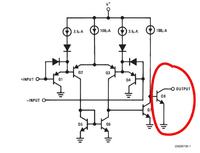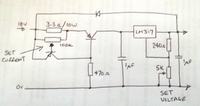- Joined
- Jul 4, 2009
- Messages
- 16,275
- Helped
- 5,140
- Reputation
- 10,309
- Reaction score
- 5,132
- Trophy points
- 1,393
- Location
- Aberdyfi, West Wales, UK
- Activity points
- 137,746
Using an Arduino to charge a battery is overkill! I was thinking of a $1 PIC.
You have spotted the problem with using the transistor as the current regulator, what it doesn't let through is converted to heat and "the charge current gradually decreases" isn't the optimal way to charge the battery. You will get similar results by just using a series resistor! Although it works, the charge current slows dies away to nothing so the time taken to reach full charge is much longer than if you 'force feed' it.
Ideally, you want the voltage to adjust so it is *just* high enough to make a fixed current flow into the battery and at the point where the battery voltage levels off you switch to constant voltage and let the battery draw what it wants until full charged.
Brian.
You have spotted the problem with using the transistor as the current regulator, what it doesn't let through is converted to heat and "the charge current gradually decreases" isn't the optimal way to charge the battery. You will get similar results by just using a series resistor! Although it works, the charge current slows dies away to nothing so the time taken to reach full charge is much longer than if you 'force feed' it.
Ideally, you want the voltage to adjust so it is *just* high enough to make a fixed current flow into the battery and at the point where the battery voltage levels off you switch to constant voltage and let the battery draw what it wants until full charged.
Brian.







